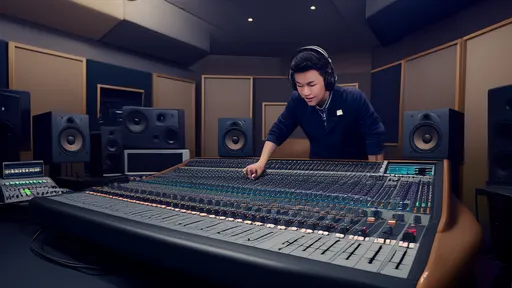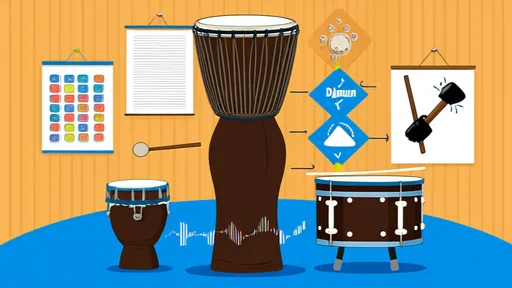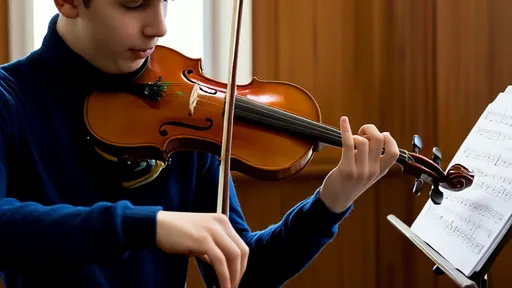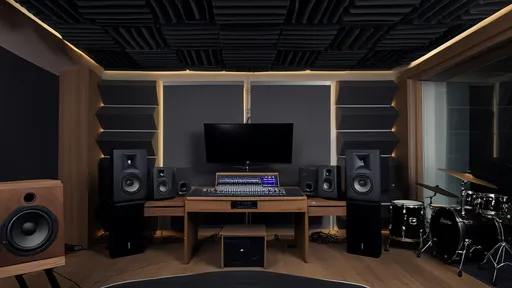The concept of absolute pitch, often referred to as "perfect pitch," has long fascinated musicians, scientists, and educators alike. This rare ability allows individuals to identify or reproduce a musical note without any reference point, a skill that seems almost supernatural to those without it. Yet, the debate over whether absolute pitch can be cultivated or if it is an innate gift remains unresolved. While some argue that early musical training can foster this ability, others insist it is a genetic trait, leaving little room for late learners. The truth, as often happens, lies somewhere in between.
The origins of absolute pitch have been a subject of scientific inquiry for decades. Studies suggest that a combination of genetic predisposition and early auditory exposure plays a crucial role. Children who begin musical training before the age of six are more likely to develop absolute pitch, though this is not a guarantee. The brain's plasticity during early childhood may allow for the neural wiring required to internalize pitch permanently. However, cases of adults acquiring absolute pitch through rigorous training are exceedingly rare, fueling the argument that there is a critical period for its development.
One of the most persistent myths surrounding absolute pitch is that it is a universal marker of musical genius. While it certainly provides an advantage in certain musical tasks, such as transcribing music or singing accurately, it does not necessarily correlate with overall musicality or creativity. Many renowned composers and performers, including Igor Stravinsky and Leonard Bernstein, did not possess absolute pitch, yet their contributions to music are undeniable. This raises the question: is absolute pitch overvalued in the musical world?
The cultural dimension of absolute pitch cannot be ignored. Research has shown that speakers of tonal languages, such as Mandarin or Vietnamese, are more likely to possess this ability. The constant attention to pitch in speech may train the ear to recognize subtle differences, suggesting that environmental factors play a significant role. This challenges the notion that absolute pitch is purely genetic and highlights the complex interplay between nature and nurture in its development.
Efforts to teach absolute pitch to adults have yielded mixed results. Some programs claim success through intensive ear-training exercises, but skeptics argue that these individuals may simply be developing highly refined relative pitch—the ability to identify notes using a reference tone. The distinction is subtle but important, as true absolute pitch does not rely on comparison. This gray area has led to commercial programs exaggerating their effectiveness, capitalizing on the allure of possessing such a coveted skill.
Despite the controversies, the scientific community continues to explore the mechanisms behind absolute pitch. Advances in neuroimaging have revealed structural differences in the brains of those with the ability, particularly in areas associated with auditory processing. These findings suggest that absolute pitch is not just a party trick but a genuine neurological phenomenon. Yet, the question of whether these differences are the cause or the result of absolute pitch remains open.
For parents and educators, the implications are both exciting and daunting. While early musical exposure may increase the chances of developing absolute pitch, it should not come at the expense of a child's love for music. Pushing too hard for technical perfection can backfire, leading to burnout or resentment. The goal should always be to nurture a lifelong appreciation for music, with or without absolute pitch.
In the end, the fascination with absolute pitch speaks to a broader human desire to understand and unlock hidden potentials. Whether it is a gift bestowed at birth or a skill that can be painstakingly acquired, its mystique endures. As research continues to shed light on this enigmatic ability, one thing is clear: absolute pitch is far more than just hitting the right notes.

By /Jul 9, 2025

By /Jul 9, 2025

By /Jul 9, 2025

By /Jul 9, 2025

By /Jul 9, 2025

By /Jul 9, 2025

By /Jul 9, 2025

By /Jul 9, 2025

By /Jul 9, 2025

By /Jul 9, 2025

By /Jul 9, 2025

By /Jul 9, 2025

By /Jul 9, 2025

By /Jul 9, 2025

By /Jul 9, 2025

By /Jul 9, 2025

By /Jul 9, 2025

By /Jul 9, 2025